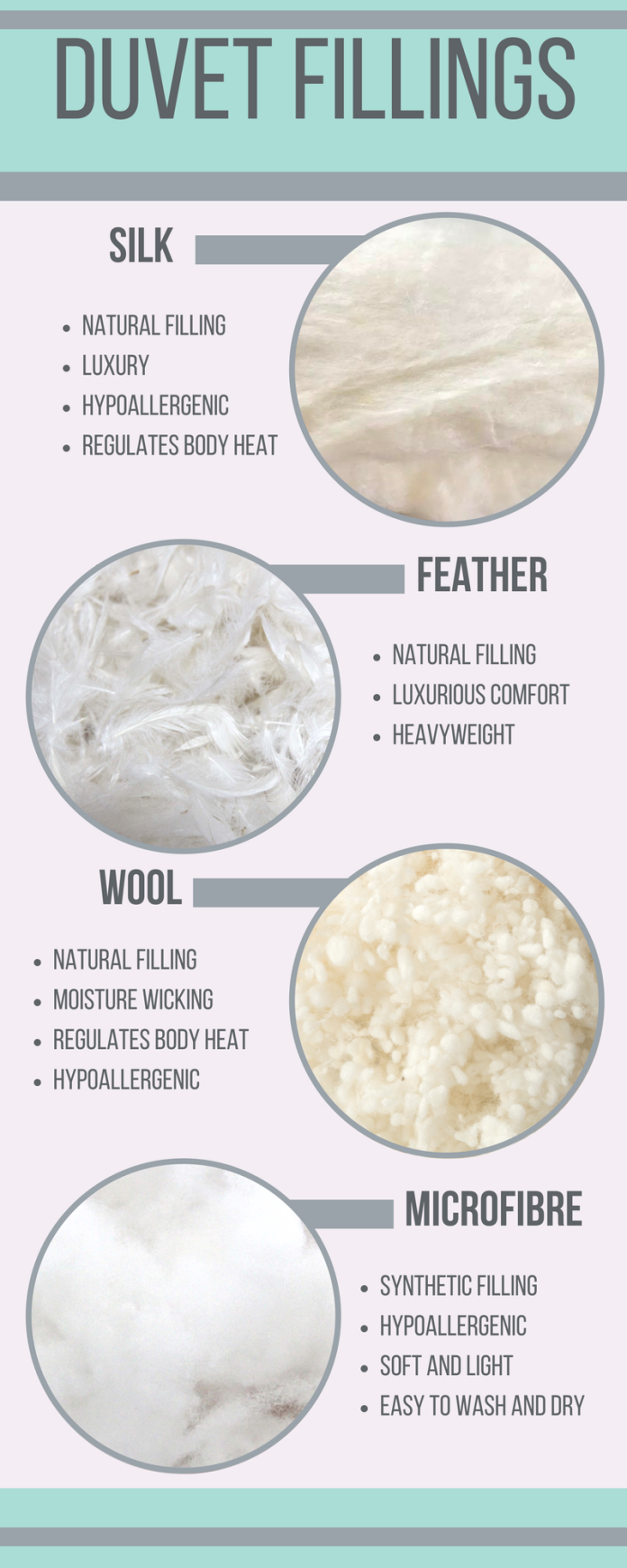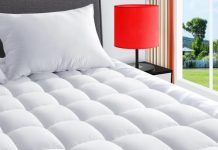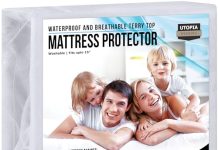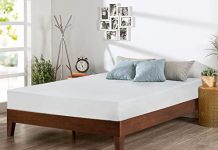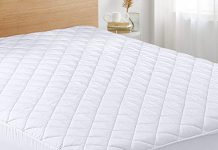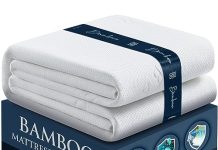When it comes to coziness and ensuring a good night’s sleep, choosing the right duvet filling is essential. With so many options available, it can be quite overwhelming to decide which filling will provide the warmth you desire. Whether you’re a fan of down, feathers, synthetic materials, or even wool, each filling has its own unique qualities to offer. So, let’s explore the different duvet fillings and uncover the secrets to staying snug and warm all night long.
Review contents
Consider the Fill Power
Understanding Fill Power
When choosing a duvet, one of the most important factors to consider is the fill power. Fill power refers to the quality and loftiness of the down or feathers inside the duvet. It measures how much space one ounce of down or feathers occupies in cubic inches. Higher fill power indicates better insulation and warmth, as the down traps more air, resulting in a fluffier and more insulating duvet.
Choosing a Higher Fill Power for More Warmth
If you tend to feel cold during the night or live in a colder climate, opting for a duvet with a higher fill power is a great choice. Duvets with fill powers of 600 or above provide excellent insulation and can keep you warm even in the coldest of temperatures. The higher the fill power, the better the duvet’s ability to retain heat and keep you cozy throughout the night.
Considering Lower Fill Power for Less Warmth
On the other hand, if you live in a warmer climate or are someone who tends to sleep hot, a duvet with a lower fill power might be more suitable. Duvets with fill powers ranging from 400-500 are lighter and less insulating, allowing for better breathability and airflow. This can help prevent overheating and keep you comfortable throughout the night.
Evaluate the Fill Material
Down Fill
Down is renowned for its exceptional warmth and insulating properties. It is the soft, fluffy undercoating found beneath the feathers of ducks and geese. Down creates loft and traps air, providing excellent heat retention. It is lightweight and breathable, making it a popular choice for duvet fillings. Down duvets with a high percentage of down clusters offer superior insulation and warmth.
Feather Fill
Feather fill is a less expensive option compared to down. While feathers can provide some insulation, they do not have the same level of loft and warmth as down. Feather-filled duvets are often heavier and less fluffy, which may suit individuals who prefer a firmer or heavier duvet.
Synthetic Fill
Synthetic fill, commonly made from polyester fibers, is an excellent alternative for those with allergies or who prefer a cruelty-free option. Synthetic duvets can mimic the warmth and loft of down at a more affordable price. They are also hypoallergenic, making them suitable for individuals with sensitivities or allergies. Synthetic duvets tend to be heavier and less breathable than down, but they are easier to care for as they can be machine-washed and dried.
Wool Fill
Wool duvets offer a natural and sustainable filling option. Wool fibers are exceptionally breathable and wick away moisture, making them ideal for those who tend to sleep hot or cold. Wool duvets provide excellent insulation and temperature regulation, keeping you warm in winter and cool in summer. They are also hypoallergenic and resistant to dust mites, making them a great choice for allergy sufferers.
Assess the Weight
Lightweight Duvets
If you prefer a lighter and less bulky duvet, a lightweight option may be suitable for you. Lightweight duvets are perfect for warmer climates or individuals who tend to sleep hot. They offer sufficient warmth without feeling heavy or suffocating. Additionally, lightweight duvets are easier to maneuver and can be a good option for children or individuals who prefer less weight on top of them while they sleep.
Medium Weight Duvets
Medium weight duvets strike a balance between insulation and weight. They are versatile and can be used in various climates, providing adequate warmth during colder months while not feeling too heavy. Medium weight duvets are a popular choice for individuals who prefer a cozy and snuggly feel without excessive warmth.
Heavyweight Duvets
For those living in exceptionally cold climates or who simply love the feeling of being bundled up and warm, heavyweight duvets are the go-to choice. These duvets provide maximum insulation and are perfect for cold winter nights. However, they can be quite bulky and may not be suitable for individuals who prefer a lighter feel or have mobility restrictions.
Consider Warmth Rating
TOG Rating
The TOG rating is a commonly used measurement in the United Kingdom to assess the thermal insulation of duvets. It indicates how effectively the duvet retains heat. The higher the TOG rating, the warmer the duvet. TOG ratings typically range from 1 to 15, with 1 being the lightest and coolest and 15 being the warmest and thickest. The appropriate TOG rating for you will depend on your personal preferences and the climate you live in.
EN Rating
The European Norm (EN) rating is another system used to determine a duvet’s warmth. The EN rating system provides a more standardized measurement compared to the TOG rating. The ratings range from 1 to 4, with 1 being the lightest and least warm, and 4 being the warmest. The EN rating is particularly useful for comparing duvets from different countries, as it offers a consistent measure of warmth.
Understand Your Sleeping Environment
Room Temperature
Take into consideration the temperature of your bedroom when choosing a duvet. If your room tends to be cooler or if you like to keep the thermostat low during the night, a duvet with higher warmth properties may be necessary. Conversely, if your bedroom is generally warmer or if you live in a hot climate, a lighter duvet with lower warmth properties may be more suitable to prevent overheating.
Humidity
Humidity levels can also affect your choice of duvet. In humid environments, moisture can affect the insulation capabilities of certain fillings, such as down, by causing them to flatten and clump together. Consider choosing a duvet with a fill material that is more resistant to humidity, such as synthetic fibers or wool.
Seasonal Changes
It’s important to consider the seasonal changes in your area when selecting a duvet. If you experience distinct seasons with varying temperatures, you may want to invest in multiple duvets to cater to different weather conditions. A lighter duvet for spring and summer and a heavier duvet for autumn and winter can ensure you stay comfortable throughout the year.
Consider Personal Sleep Preferences
Sleeping Hot
If you tend to sleep hot or easily overheat during the night, it’s important to choose a duvet that can effectively regulate your body temperature. Opting for a duvet with breathability and moisture-wicking properties, such as a synthetic or wool-filled duvet, can help dissipate excess heat and keep you cool and comfortable throughout the night.
Sleeping Cold
On the other hand, if you find yourself constantly feeling cold while sleeping, a duvet with superior insulation is key. Consider a down or high-fill power duvet that can trap and retain body heat, providing you with the warmth you need for a cozy night’s sleep.
Evaluate the Duvet Construction
Baffle Box Construction
Duvets with baffle box construction are designed with small internal fabric walls that prevent the filling from shifting or clumping together. This construction helps maintain an even distribution of the fill, ensuring consistent warmth and loftiness throughout the duvet. Baffle box construction also allows for better airflow, preventing the formation of cold spots and enhancing overall comfort.
Sewn-Through Construction
Sewn-through construction involves stitching the top and bottom fabric layers of the duvet together, creating a grid-like pattern. While sewn-through construction is simpler and more affordable, it can result in some heat loss along the stitched lines, leading to potential cold spots. However, if you prefer a lighter duvet or do not need maximum warmth, sewn-through construction can be a suitable option.
Consider Allergy Concerns
Hypoallergenic Fill
For individuals with allergies or sensitivities, choosing a duvet with hypoallergenic fill is essential. Hypoallergenic fillings, such as synthetic fibers or wool, are less likely to trigger allergic reactions or aggravate existing allergy symptoms. These fillings are resistant to dust mites, mold, and mildew, making them a safer choice for allergy sufferers.
Anti-Allergen Treatments
Some duvets undergo anti-allergen treatments that further reduce the risk of allergic reactions. These treatments can include special washes or finishes that eliminate allergenic particles from the fill material. If you have specific allergy concerns, look for duvets labeled as “anti-allergen” or “hypoallergenic” to ensure a healthier and more comfortable sleep environment.
Assess Durability and Longevity
Long-Lasting Fill Materials
Consider the durability of the fill material when selecting a duvet. Down and high-quality synthetic fills tend to be more resilient and have a longer lifespan compared to feather fillings. These fill materials can maintain their loft and insulation properties for an extended period, ensuring that your duvet retains its warmth and comfort for years to come.
Quality of Construction
The quality of the duvet’s construction plays a significant role in its durability and longevity. Look for duvets with well-secured seams and durable stitching to prevent the fill from escaping. Reinforced edging and corner loops can also help maintain the integrity of the duvet over time. Investing in a duvet with superior craftsmanship and attention to detail will ensure it withstands regular use and washing.
Maintenance and Care
Proper maintenance and care are essential for maximizing the lifespan of your duvet. Always follow the manufacturer’s instructions for cleaning and washing. Regularly fluff your duvet to help maintain its loft and prevent clumping. Using a washable duvet cover can also provide an extra layer of protection, prolonging the life of your duvet and reducing the need for frequent washing.
Consider the Price Range
Budget-Friendly Options
If you’re on a tight budget, there are still quality duvet options available. Synthetic-filled duvets are often more affordable compared to down and feather-filled duvets. Wool duvets, although slightly pricier, provide excellent value due to their durability and insulation properties. Look for duvets that offer a good balance between price and quality to ensure you get the most value for your money.
Investing in Higher-Quality Duvets
Investing in higher-quality duvets can be beneficial in the long run. While they may come with a higher price tag, they often offer superior warmth, durability, and comfort. Consider factors such as fill power, fill material, and construction quality when opting for a higher-priced duvet. Investing in a premium duvet can result in a better sleep experience and a duvet that lasts for years to come.
By considering factors such as fill power, fill material, weight, warmth rating, sleeping environment, personal sleep preferences, duvet construction, allergy concerns, durability, and price range, you can confidently choose the perfect duvet that provides the ideal warmth and comfort for your needs. Remember to prioritize your preferences and prioritize value for money to ensure a cozy and restful night’s sleep.

